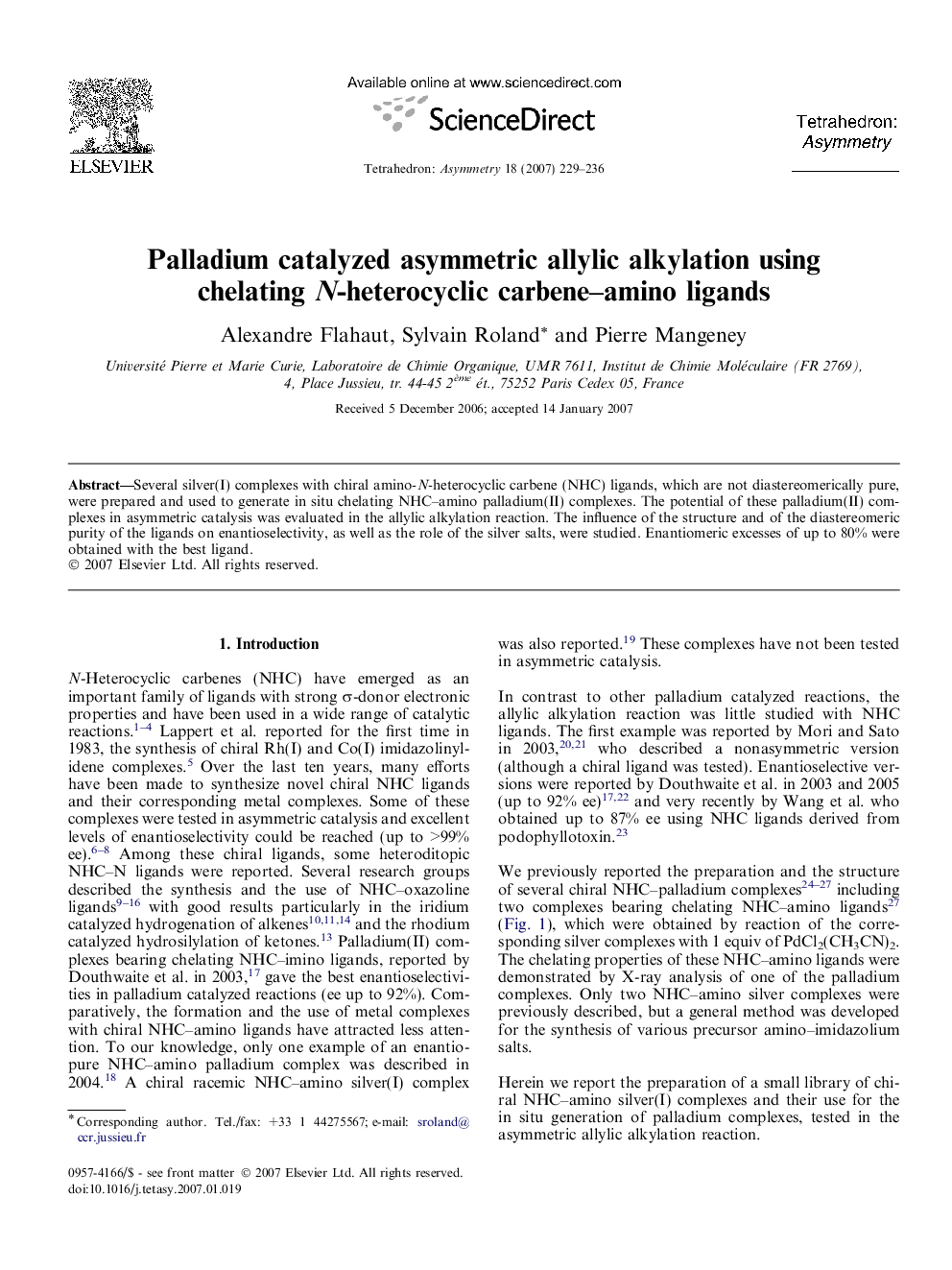| کد مقاله | کد نشریه | سال انتشار | مقاله انگلیسی | نسخه تمام متن |
|---|---|---|---|---|
| 1345561 | 980209 | 2007 | 8 صفحه PDF | دانلود رایگان |

Several silver(I) complexes with chiral amino-N-heterocyclic carbene (NHC) ligands, which are not diastereomerically pure, were prepared and used to generate in situ chelating NHC–amino palladium(II) complexes. The potential of these palladium(II) complexes in asymmetric catalysis was evaluated in the allylic alkylation reaction. The influence of the structure and of the diastereomeric purity of the ligands on enantioselectivity, as well as the role of the silver salts, were studied. Enantiomeric excesses of up to 80% were obtained with the best ligand.
Figure optionsDownload as PowerPoint slide
C29H32ClN33-Mesityl-1-[2-{(S)-1(phenyl)propylimino}-2-phenyl ethyl]imidazolium chloride[α]D20=-26 (c 1.1, CHCl3)Source of chirality: (S)-1(phenyl)propylamineAbsolute configuration: (S)
C32H32ClN33-Mesityl-1-[2-{(S)-1-(1-naphthyl)ethylimino}-2-phenyl ethyl]imidazolium chloride[α]D20=+97 (c 1, CHCl3)Source of chirality: (S)-1-(1-naphthyl)ethylamineAbsolute configuration: (S)
C32H38ClN3O3-(2,6-Diisopropylphenyl)-1-[2-{(S)-1-(p-methoxyphenyl)ethylimino}-2-phenyl ethyl]imidazolium chloride[α]D20=-18 (c 1, CHCl3)Source of chirality: (S)-1-(4-methoxyphenyl)ethylamineAbsolute configuration: (S)
Journal: Tetrahedron: Asymmetry - Volume 18, Issue 2, 14 February 2007, Pages 229–236